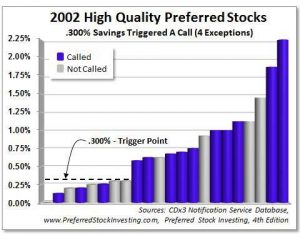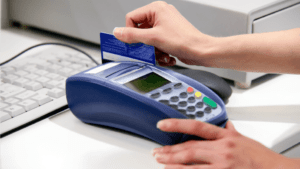
Sub-ledgers are like notebooks you use to write down business transactions as they happen. Then, you summarize that information in a master notebook—the general ledger. General ledgers, also referred to as accounting ledgers, are the physical or digital record of a company’s finances.
Get Your Questions Answered and Book a Free Call if Necessary

Accounting software automates some of the most tedious aspects of general ledger reconciliation, such as automatically generating journal entries and streamlining bank reconciliation. General ledgers are made up of (and organized by) accounts, or subsections that categorize financial transactions by type. The accounts in turn may include sub-accounts or sub-ledgers, which record more precise details about each transaction.
Why Do I Need a General Ledger Template?
A business’ financial transactions are first recorded in a general journal. From there, the specific amounts are posted into the correct accounts within the general ledger. Sometimes referred to as a book of original entry, the general journal lists all https://www.accountingcoaching.online/ financial transactions of a business, and the general ledger organizes and balances transactions. In this step, you need to compare the previous accounting periods closing trial balances to the opening balances of the current period ledger accounts.
- He has worked as an accountant and consultant for more than 25 years and has built financial models for all types of industries.
- Consider the following example where a company receives a $1,000 payment from a client for its services.
- In this case, 5 represents expense transactions, 53 would be operating supplies, 531 is federal supplies, and 5311 refers to office supplies.
- He has been an auditor of international companies and a tax strategist for real estate investors.
Ask a Financial Professional Any Question

That’s why there are two sides to a ledger, one for debits and one for credits. For a large organization, a general ledger can be extremely complicated. In order to simplify the audit of accounting records or the analysis of records by internal stakeholders, subsidiary ledgers can https://www.business-accounting.net/economic-profit-vs-accounting-profit/ be created. General ledger reconciliation is where you compare the balances of GL accounts with external sources, like bank statements, customer invoices, etc. This process is excellent for identifying errors or discrepancies between the general ledger and the external source.
In other words, these are the assets remaining after you pay off all the debts and the liabilities. Also, liabilities can be represented on the right-hand side of the balance sheet. So, liabilities can be further divided into current liabilities and non-current liabilities. This is because you can easily verify if various accounting items are classified and recorded accurately with the help of the given information. You may choose to conduct an internal audit or get your accounts audited by an accounting professional. Therefore, General Ledger acts as an important financial record that is audited whatever may be the case.

It allows users to gather information on sales, purchases, and cash flow which can be used for reports such as balance sheets and income statements. FreshBooks has everything you need, including journal entries, accounts payable, balance sheets, and more, freeing you up to work on growing your company and increasing profits. In the case of certain types of accounting errors, it becomes necessary to go back to the general ledger and dig into the detail of each recorded transaction to locate the issue. At times this can involve reviewing dozens of journal entries, but it is imperative to maintain reliably error-free and credible company financial statements. Enter transaction date, description, journal reference, transaction amount, and debit and credit balances for insight into individual transaction variances.
As we said earlier, GL is the foundation of an organization’s financial reporting system. But, if you don’t know what effective GL management is, you’re one step away from making a big wrong decision. Simply put, just as much as knowing what a GL is, is essential, understanding what is general ledger reconciliation is equally important.

These help enterprises record information about purchases, sales, and other transactions. A trial balance is an internal report that lists each account name and balance documented within the general ledger. It provides a quick overview of which accounts have credit and debit balances to ensure that the general ledger is balanced faster than combing through every page of the general ledger. Thus, as per the above table, the credit sales figure of $200,000 would go into the accounts receivable control account.
This information can help management make financial and data-based decisions. For example, a bookkeeper or accountant could use an accounting ledger, or general ledger, to identify the source of increased expenses and make the necessary corrections. In accounting software, a general ledger sorts all transaction information through the accounts. Also, it is the primary source for generating the company’s trial balance and financial statements. The ledger’s accuracy is validated by a trial balance, which confirms that the sum of all debit accounts is equal to the sum of all credit accounts.
Add the account name and number, item date and details, and post reference, such as asset, liability, or revenue for each transaction. Then, enter the debit or credit figures so that you can account for every transaction and determine your bottom line. To correctly record an increase or decrease to an account within your business, you will need to use debit and credit for the double-entry bookkeeping method. journal entries This is a principal method of accounting in which transactions are recorded in at least two journal entries- a debit to an account and a corresponding credit to an account. When starting a small business, you may not know all of the important ins and outs of record keeping. A general ledger records transactions and helps generate financial statements for investors, creditors, or even regulators.
A general ledger is the centralized document for all details relating to your company’s financial status, including liabilities, assets, owner’s equity, expenses, and revenue. This system acts as a master document detailing the business’s transactions over some time. These transactions are organized by accounts together with their dates, descriptions, and account balances—enough information to give you a bird’s-eye view of your business’s financial health. You may include individual assets and accounts like accounts payable and receivable, liabilities, inventory, and investments. This information is used to prepare financial reports, monitor finances, track cash flow, and prevent accounting errors or fraud. The main purpose of an accounting ledger is to keep track of all financial transactions that have taken place within a business.

